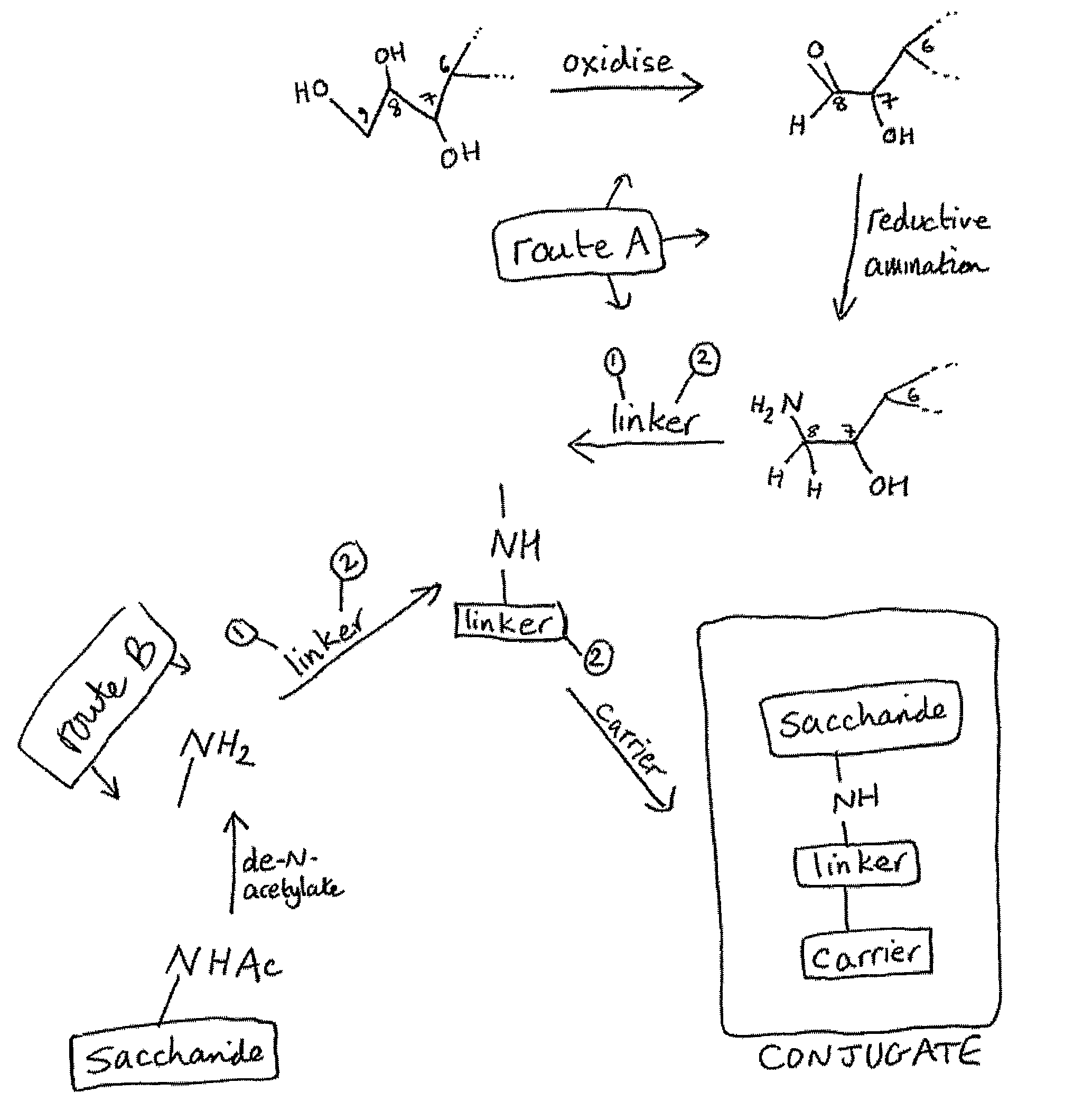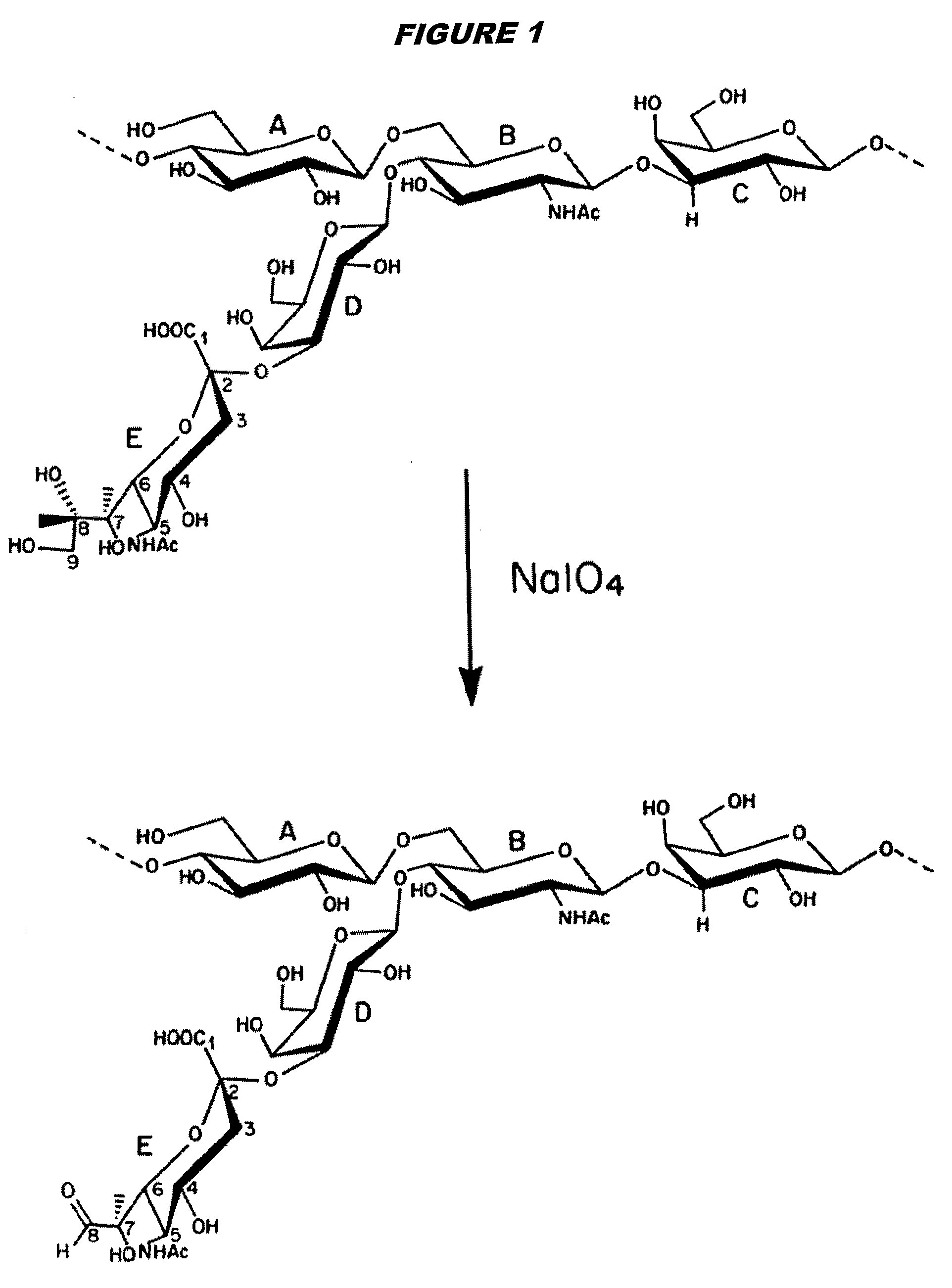Conjugation of streptococcal capsular saccharides
a technology of streptococcal and capsular saccharides, which is applied in the field of conjugation of streptococcal capsular saccharides, can solve the problems of poor immunogenicity
- Summary
- Abstract
- Description
- Claims
- Application Information
AI Technical Summary
Benefits of technology
Problems solved by technology
Method used
Image
Examples
Embodiment Construction
Conjugate Production and Characterisation
[0224]Capsular saccharide from GBS serotype Ib was purified as described in reference 15 and then re-acetylated as described above. The saccharide was de-N-acetylated to provide amine groups for linking. These amine groups were used to covalently conjugate the saccharides to monomeric tetanus toxoid (TT) either by direct reductive amination (on C8 of sialic acid, as described in the prior art) or via a SIDEA spacer (as described for meningococcal saccharides in ref. 218).
[0225]Sialic acid content in the conjugates was determined was performed according to the colorimetric method of ref. 219. The total saccharide amount was extrapolated from sialic acid content (sialic acids are on average 31% by weight of the polymer). Protein concentration in the conjugate was determined with the Micro BCA Protein Assay Kit (Pierce). A polysaccharide:protein weight ratio of between 1 and 4 was the target, and results were as follows:
[0226]
ConjugationSacchari...
PUM
| Property | Measurement | Unit |
|---|---|---|
| MW | aaaaa | aaaaa |
| MW | aaaaa | aaaaa |
| molecular weight | aaaaa | aaaaa |
Abstract
Description
Claims
Application Information
 Login to View More
Login to View More - R&D
- Intellectual Property
- Life Sciences
- Materials
- Tech Scout
- Unparalleled Data Quality
- Higher Quality Content
- 60% Fewer Hallucinations
Browse by: Latest US Patents, China's latest patents, Technical Efficacy Thesaurus, Application Domain, Technology Topic, Popular Technical Reports.
© 2025 PatSnap. All rights reserved.Legal|Privacy policy|Modern Slavery Act Transparency Statement|Sitemap|About US| Contact US: help@patsnap.com



